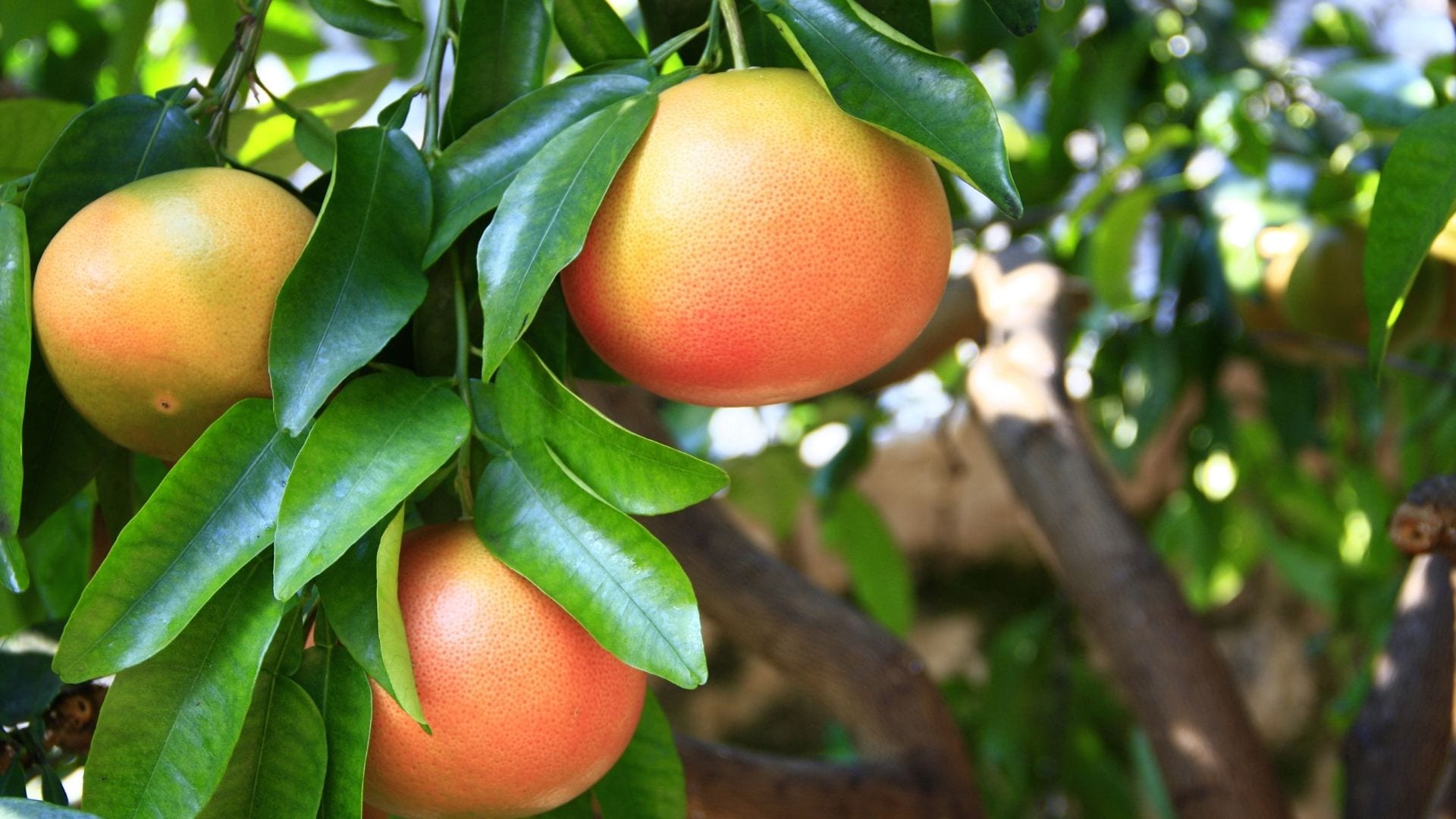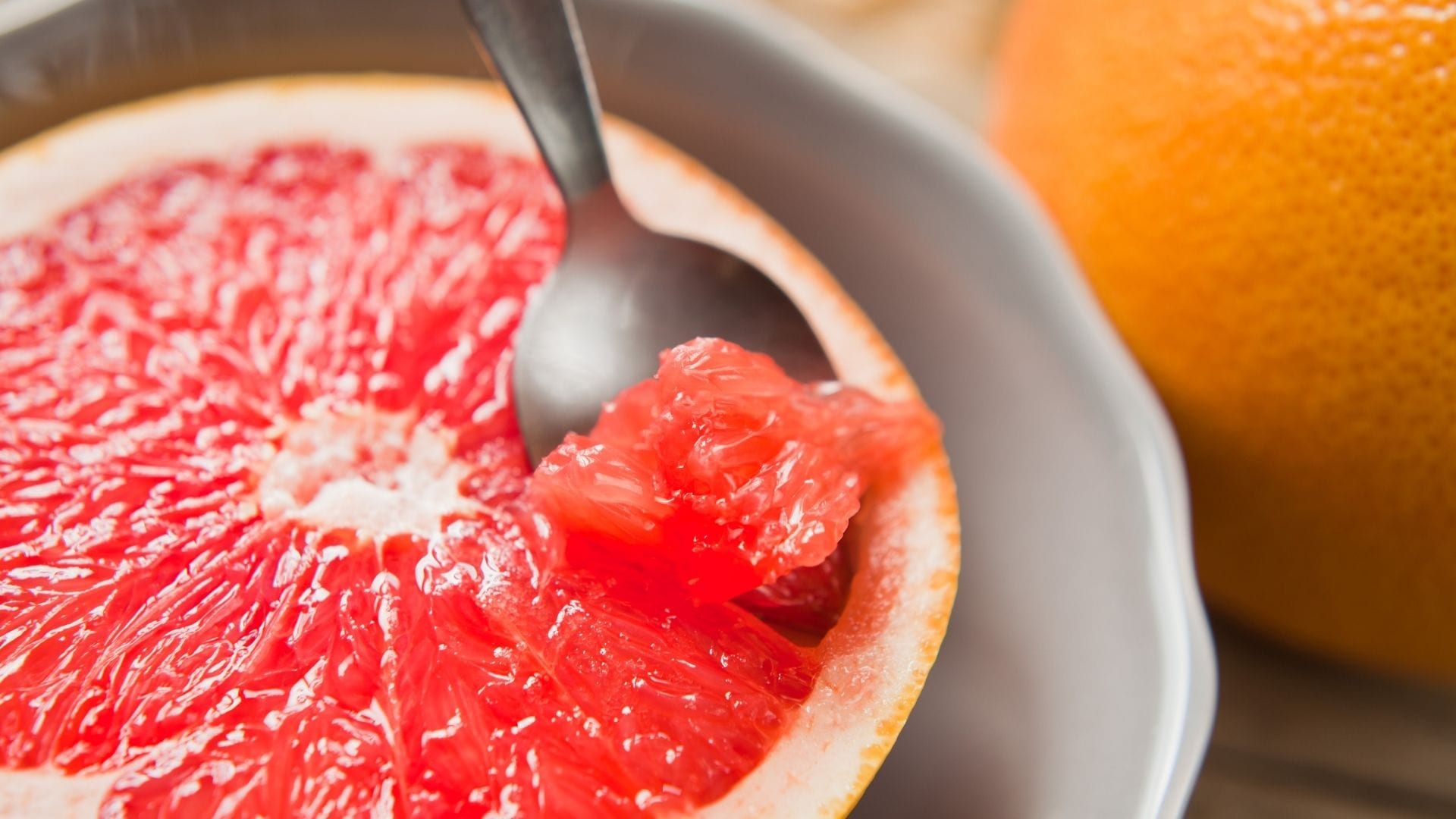The grapefruit is full of surprises. Learn important facts about the bittersweet citrus fruit here.
Start the day with a glass of freshly squeezed grapefruit juice. The juicy, sweet-sour and often bitter citrus fruit is extremely popular. But, aside from the taste, the many health benefits attributed to grapefruit may also be a reason why so many add it to their diet. And seeing as there is such a large variety of different types, there is something to suit every taste. However, in some cases, caution is advised when consuming grapefruit. Here you will find interesting and surprising information about this beloved fruit.
The Caribbean island of Barbados on the edge of the Atlantic Ocean is where the grapefruit originated. It was here that the citrus fruit was first discovered at the beginning of the 18th century, and it probably arose as a naturally occurring hybrid between an orange and a pomelo. Today, it populates typical citrus-growing countries. Whether faced with hot desert or humid tropics: grapefruit are extremely heat-tolerant. Many countries in the Mediterranean region have taken up grapefruit cultivation as have South Africa, Mexico and, in particular, the USA.
Grapefruit varieties: fruity diversity
Grapefruit are smaller than pomelo and larger than oranges due to the crossbreeding and weigh between 150 and 450 grams. Shape, colour and taste vary considerably depending on the breed and the conditions in which they were grown. So there are all sorts of specimens; some are more round, some are flatter, one sort has a thicker peel, another thinner, and the colour can range from light yellow or a reddish-yellow skin. The colour of the flesh is light yellow, pink or even pink-red, depending on the variety. And the taste ranges from rather sour to sweet, with a varying degree of bitterness. More intensely coloured varieties are much milder in taste. Since the climate has a great influence on the fruit, one particular sort of grapefruit will taste much sweeter, for example, when it is grown in the tropics than when it is grown in the Mediterranean.
Incidentally, the name of the grapefruit derives from the way the fruit grows on the tree. The fruit of many sorts of grapefruit hang together in clusters like bunches of grapes.

Health benefits: a considerable nutrient content
Grapefruit not only has a lot to offer in terms of taste, it also has an incredibly high vitamin C content – typical of many citrus fruits. A medium-sized grapefruit covers the daily requirement of 100 milligrams. In addition, grapefruit contain the B vitamin folic acid, as well as various minerals, including potassium, calcium and phosphate. Thanks to large quantities of pectin in the peel, the fruit also has a high fibre content.
The intake of the secondary phytochemicals also found in grapefruit have further health benefits. Grapefruit with pink or red flesh contain the substance lycopene, which is also found in tomatoes and is known for its antioxidant and thus cell-protecting properties. Additionally, bitter substances have a variety of digestive effects and are therefore particularly popular for gastrointestinal complaints. Nowadays, however, the quantities of bitter substances in grapefruit are considerably lower than in the past due to targeted cultivation, as the bitter taste was undesirable. A reversal of this trend is now becoming apparent due to the positive effect of bitter substances.
In addition, natural medicine in particular also uses the ingredients of the grapefruit seeds and the white pericarp. An extract obtained from them contains large amounts of flavonoids. These have antimicrobial and anti-inflammatory properties. This is why grapefruit seed extract is used, for example, in the form of gargles for inflammation of the mouth and throat. Whether the effect is better than that of sage, however, has not yet been clarified.
Bitter substances: be aware of medicinal interaction
As healthy as the flesh and juice of grapefruit are, there are some cases where it is strongly advised to avoid this fruit. Why? The bitter substances contained, such as furanocoumarins and the substance naringin, influence the effect of several medicines. While some drugs have a weakened effect in combination with the bitter substances, the effect of other substances is intensified. Since both cases can be extremely dangerous, a doctor should be consulted regarding possible grapefruit consumption when taking medication. Particular caution is advised, for example, with antihypertensive medication, heart tablets containing the substance nifedipine, painkillers and sleeping pills, as well as with anti-allergy drugs.

Purchasing and storage know-how
Grapefruit are available all year round, but they can be found in greatest quantity between November and May. When buying, make sure that the fruit is intact and, for example, does not have any mould or bruises on the skin. Then make sure not to put them at the bottom of the shopping trolley as this will cause bruising, which can make them mouldy more quickly. If you would also like to process the peel, make sure that the fruit has not been waxed. Stay on the safe side with fruits from organic cultivation as the designation “natural” or “untreated” only refers to what happens after picking.
Once home, the question of proper storage naturally arises. Being a fruit that is used to the sun, grapefruit does not like temperatures that are too cold. The BioFresh Fruit &Vegetable safe, which is often the best choice for fresh produce, is not a good choice for grapefruit and nor is the freezer compartment. In the normal refrigeration compartment, however, they will keep for up to three weeks. The Liebherr cellar compartment provides even better storage conditions. With slightly warmer temperatures and ideal humidity, the fruit can be kept for up to six weeks, depending on their initial condition. However, the following still applies of course: The fresher the better!
In addition to temperatures that are too cold, grapefruit do not like to be near to produce that ripen on the shelf. Since it is harvested when fully ripe, it is sensitive to ethylene gas, which is emitted by foods that continue to ripen after being picked, such as apples. The following article will tell you more about how to store different types of fruit and vegetables at the optimum conditions in your Liebherr refrigerator: https://blog.liebherr.com/hausgeraete/de/obst-gemuese-lagern/.
Preparation: a variety of taste sensations
Like other citrus fruits, grapefruit is ideal for juicing. But the flesh is also delicious. It is therefore a good idea to cut the fruit in half, separate the segments with a knife and then spoon out the halves. And the segments go well with a number of desserts. Whether as a slight bitter note in a juicy fruit salad or as a fruity addition to savoury salads with meat or fish: grapefruit zests up many a dish! Likewise, the citrus fruit is perfect for making tasty jams or jellies and even home-made liqueurs.

#grapefruit, #citrus, #orange. #grapefruit, #storage, #cellarcompartment, #bitters, #medicines, #bitter, #digestion, #lycopene, #vitaminC, #grapefruitseedextract
